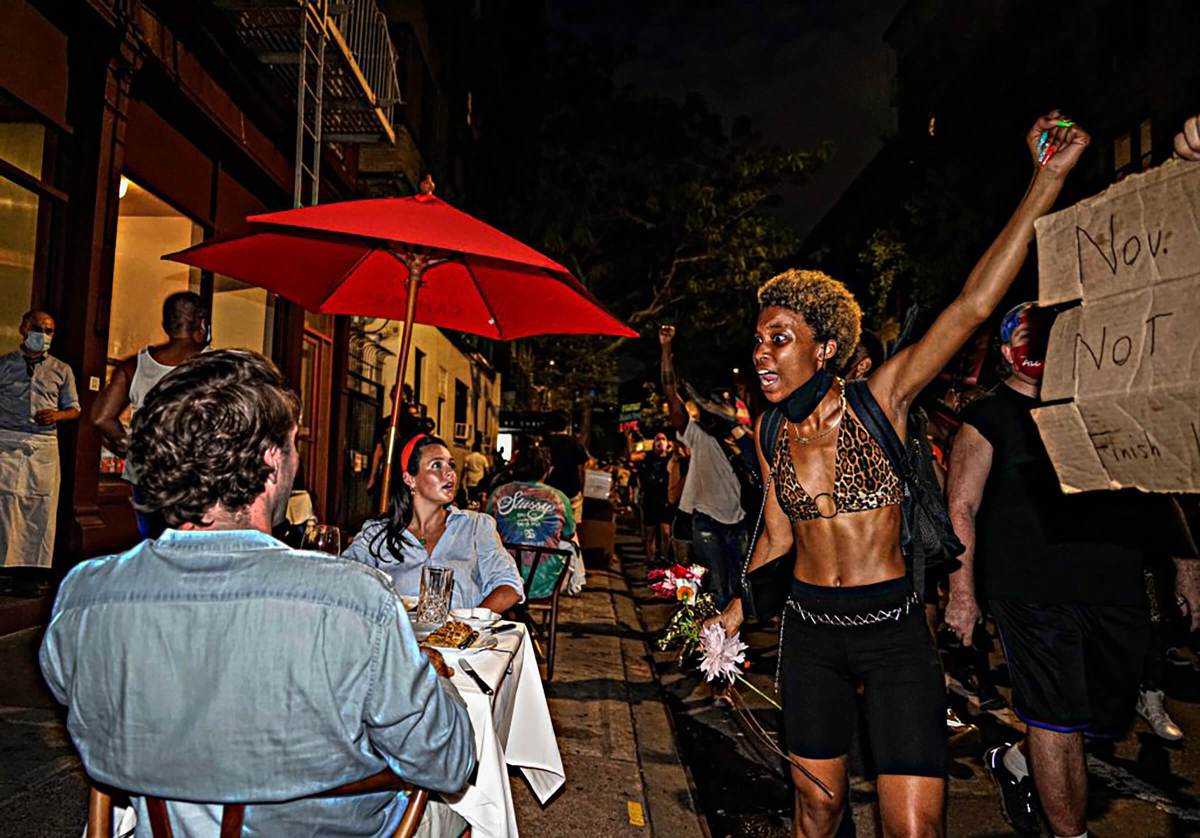Every twelve-month cycle is rife with iconic snapshots that are printed in the red room of our mind’s eye, images that we can’t shake as we move into the following year with a sense of hope for a better tomorrow. However, 2020 has given the world so many seminal moments in a time brimming with anguish and the unprecedented sacrifice of healthcare workers, we will not only be deconstructing them in 2021, but likewise in the decades to come as we continue to learn from this historic year.
amNewYork Metro looks back at the photographs that encapsulate a year marred by death, violence, and a global pandemic that continues to leave an ethical and financial hole in our society.
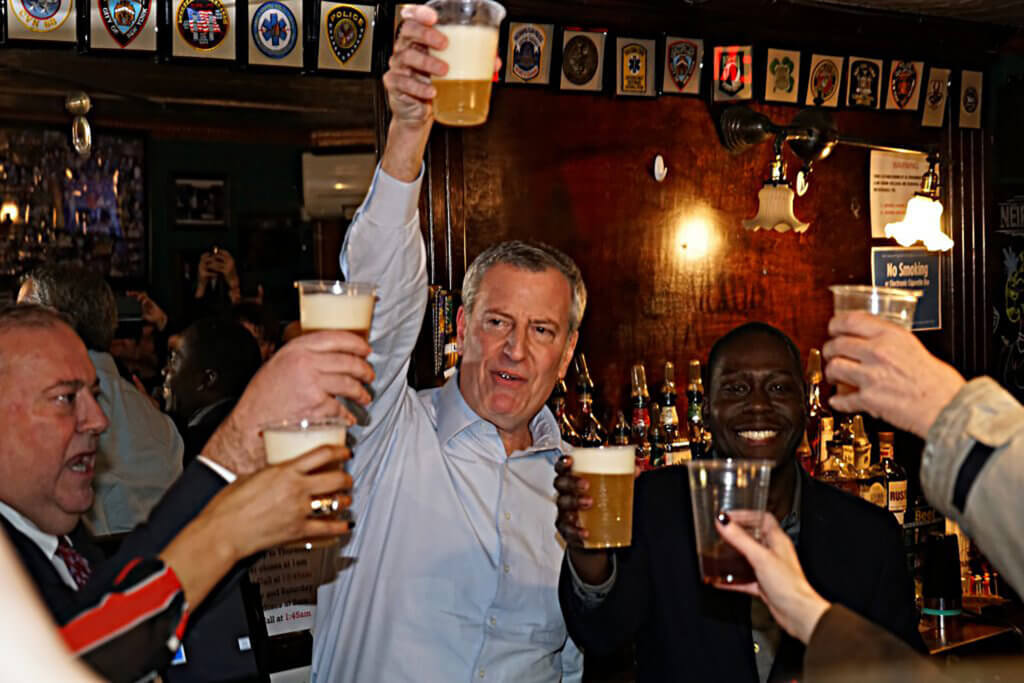
January
The New Year started with the clink of glasses when Mayor Bill de Blasio and Neir’s Tavern owner Loycent Gordon said cheers to each other on Jan. 10, when the historic Queens pub, announcing a new lease that will keep the near 100 year-old site in business. For some, usual annual festivities went on as planned, such New Yorker’s starting the year off with an icy plunge with the Coney Island Polar Bears. But as the month ended, tragedies occurred, Kobe Bryant and his daughter, along with friends were killed in a helicopter crash, and then China shared news of the outbreak in Wuhan, cordoned off travel to certain provinces by January 24th.
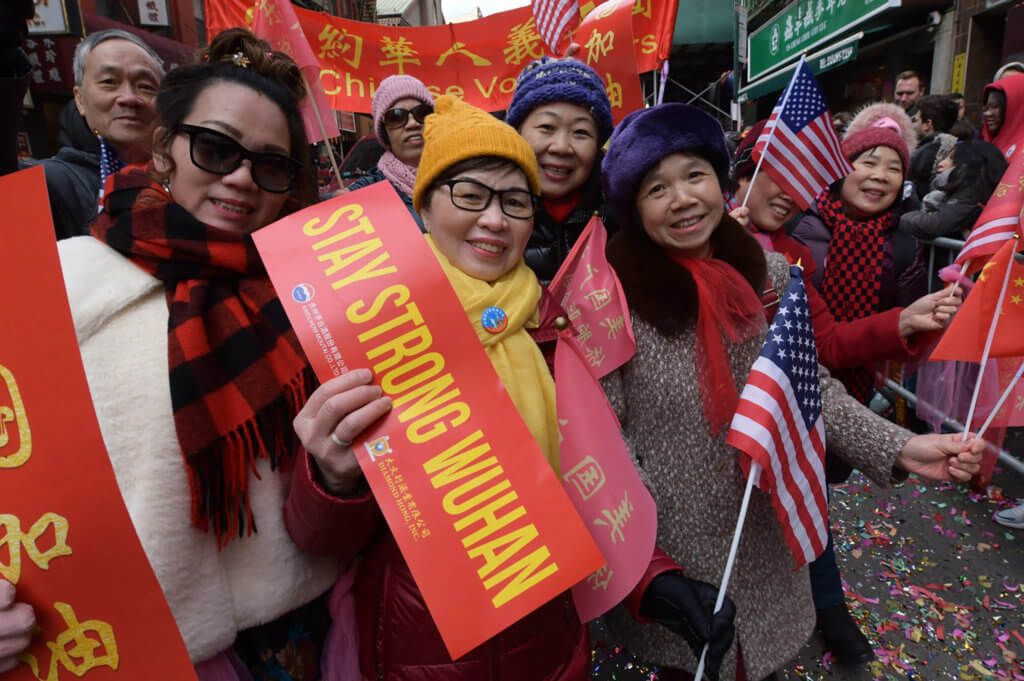
February
Manhattan had yet to be subjected to the full force of the deadly COVID-19 virus but the impact it was having overseas was not lost on the city. During the lunar New Year parade on February 9th, participants held a sign saying “Stay Strong Wuhan” as they marched along Mott Street in the heart of Chinatown. This act of solidarity came less than one month before New York became the virus’ epicenter.
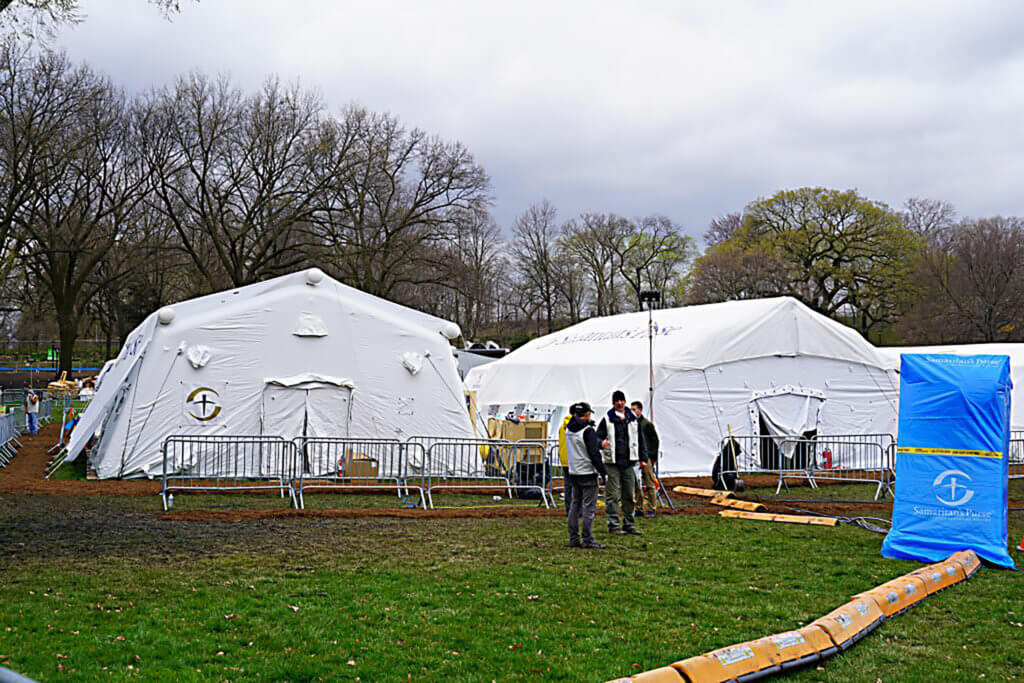
March
Lockdown and social distancing are now terms we have unfortunately become accustomed to, although it feels like a lifetime, it was not always like this. March marked the relentless battle between life and death between healthcare workers and the novel coronavirus. Nurses and doctors worked extensive shifts, hospitals were flooded with patients, forcing those infected to line the hallways and corridors. This came in tandem with the historic lockdown that declared all non-essential businesses to close without exception. The situation grew so severe that emergency field hospitals were erected in Central Park’s East Meadow by Samaritan’s Purse in order to deal with the influx of patients.
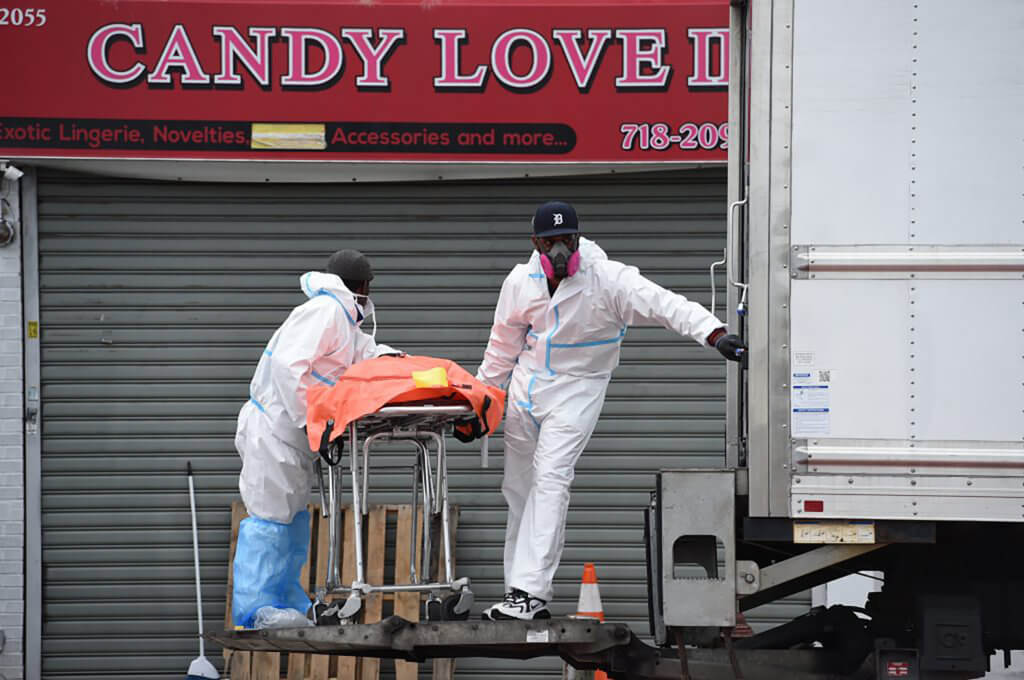
April
The pandemic took a grim turn in April as the lack of rooms to care for patients turned to lack of storage locations to hold all of the corpses. Trucks parked outside of hospitals, their open rears serving as gaping maws coroners fed with a seemingly endless supply of human husks will haunt survivors for the rest of their days. In an attempt to keep up the morale of the soldiers fighting an invisible war, the blue angel fighter jets flew over the city, thanking medical staff for their tireless effort.
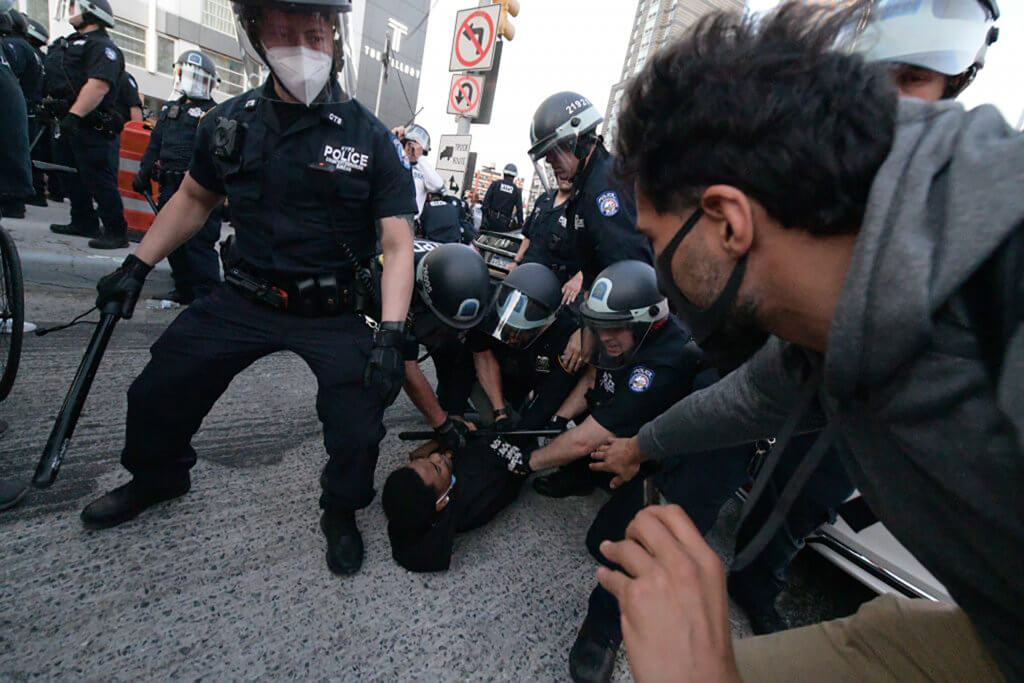
May
The true wrath of what 2020 would become began rearing its ugly head in May. By the 7th of the month, 3 million people had been left jobless throughout the United states in the wake of the raging pandemic. Meanwhile New York–the epicenter of America’s virus crisis–began controversial cleanup methods, such as removing homeless individuals from the subway system and housing them in unused hotels throughout the city. Bread lines like which we had seen since the Great Depression began popping up in every borough. And just when it seemed as if things couldn’t get any worse, George Floyd was killed with a knee to his neck on May 25th. This single act unleashed thousands of protesters what was–merely days prior–onto empty streets, starting a movement that would change the trajectory of the year. Black Lives Matter would be on every set of lips and the majority of news headlines for months to come.
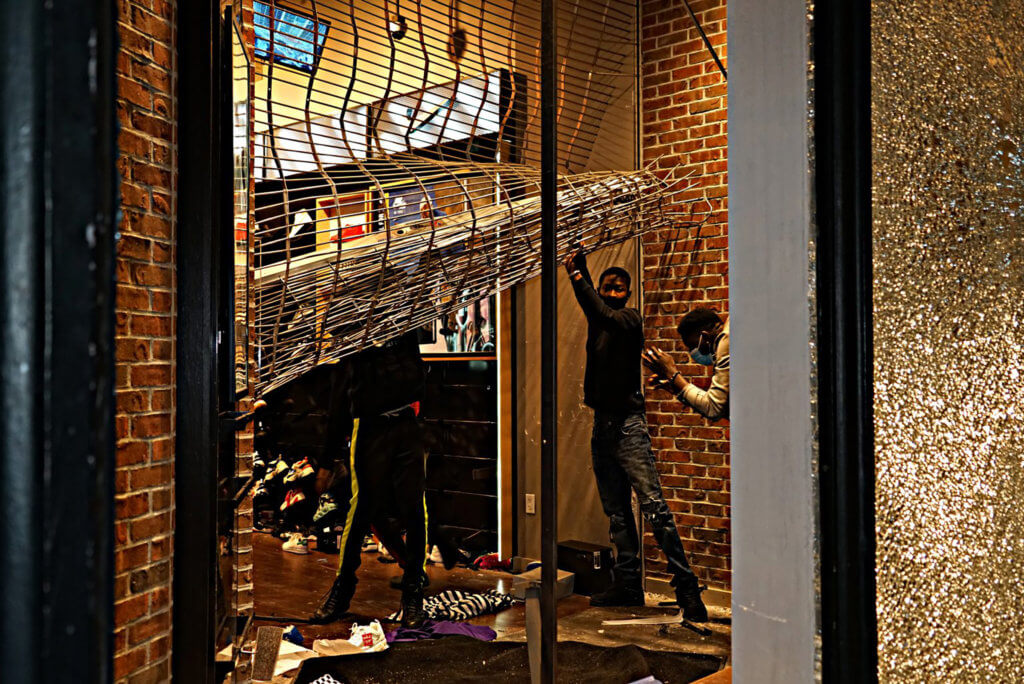
June
The battle for change raged on in June as the number of Black Lives Matter protests and violent encounters grew. NYPD officers clashed with protesters during the day as looters obliterated storefront windows during the night, lifting bent metal shutters in order to gain access to retail goods. Fires throughout the city raged in the city streets and the hearts of activists in hopes of creating a better tomorrow from the ashes of 2020’s today.
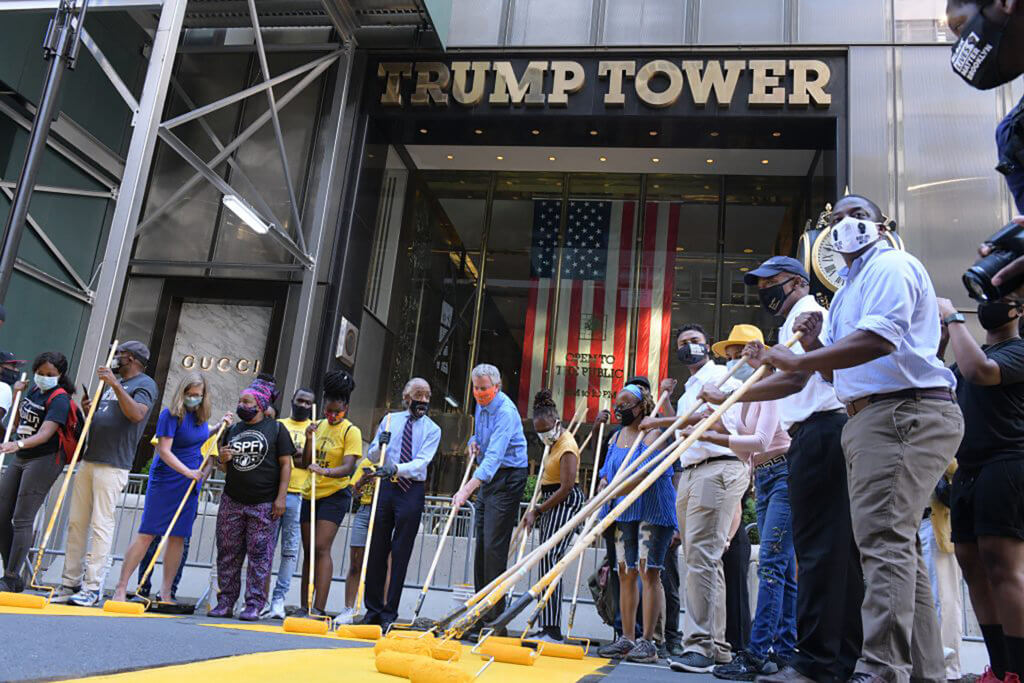
July
In an effort to show solidarity with the Black Lives Matter Movement, Mayor Bill de Blasio made a plan announcing that murals will be painted in each borough. Starting in June with a Black Lives Matter mural in Brooklyn, he emphasized the importance of this message into July with one in Jamaica, Queens and two in Manhattan–one on both sides of Adam Clayton Powell Jr. blvd. between 125th and 127th streets, and the other directly in front of Trump Tower.
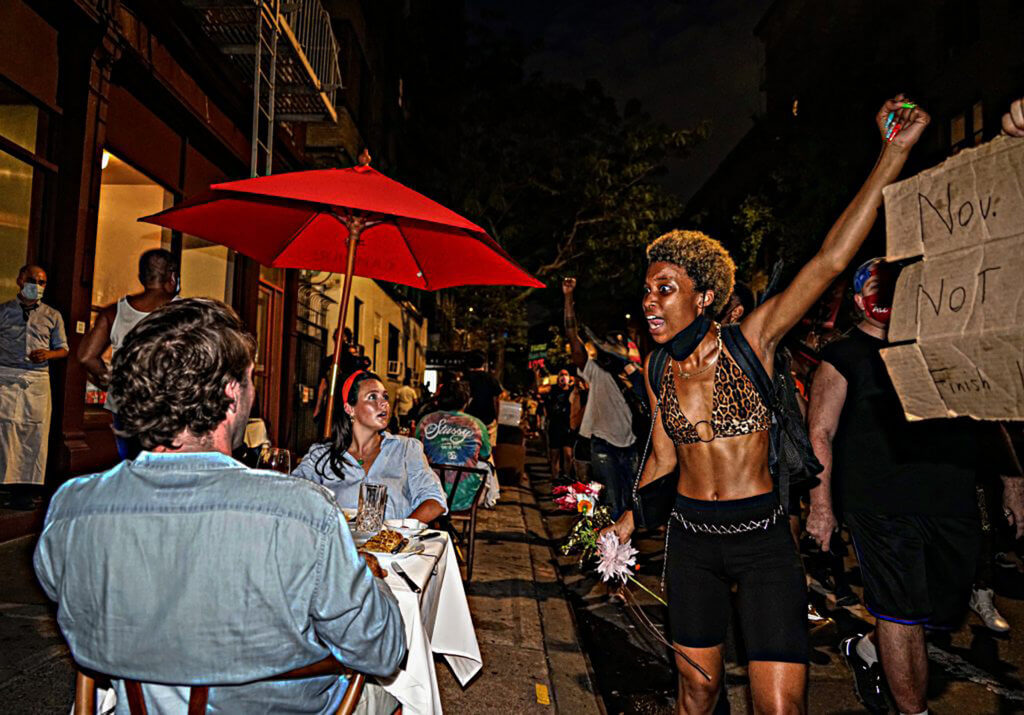
August
While Tropical storm Isaias destroyed dozens of trees, cars, and homes, the real heated moments of social injustice, police brutality, and racism continued with daily Black Live Matter marches leading towards a near 100 days of protests. On August 29th, hundreds marched over the Williamsburg and Ed Koch- Queensboro Bridges in conjunction with rallies held in Washington D.C. for the anniversary of Martin Luther King’s “I Have A Dream” speech. It was at this moment that outside diners in gentrified areas of Lower Manhattan were confronted by protesters still mourning the loss of those killed by police officers and the systematic racism they face every day.
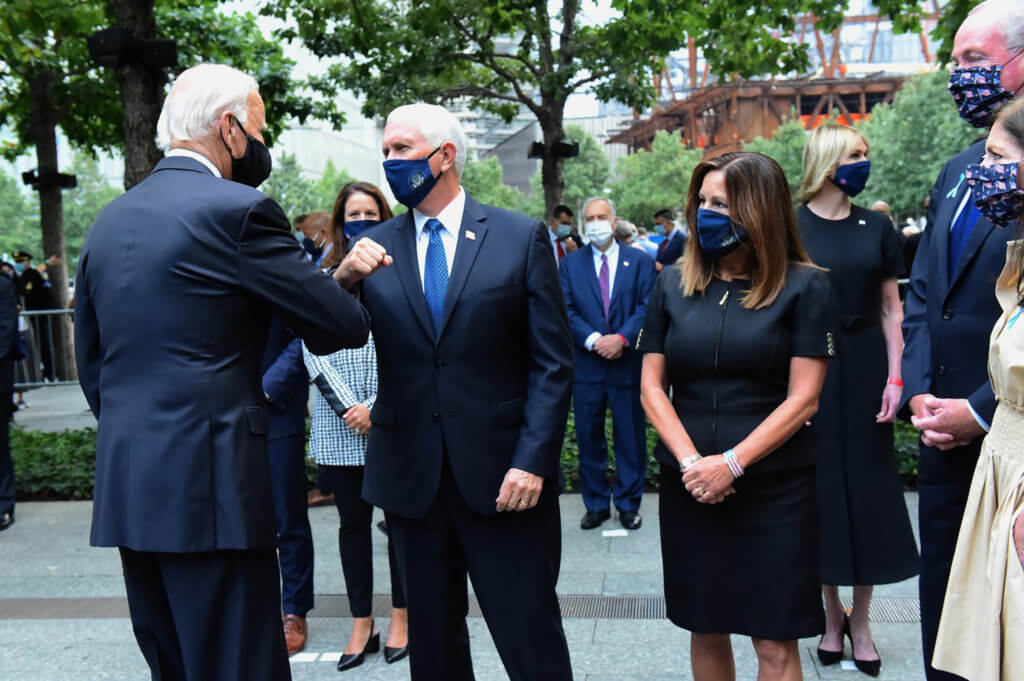
September
A year already running rampant with diversion was further torn asunder during a memorial that ordinarily would unite the city. With the COVID-19 pandemic preventing large gatherings from taking place, the 19th annual tribute to those in the September 11th terror attacks were split into two commemorative occasions. After the 911 museum announced they would be forgoing the traditional name reading ceremony in favor of a simple, socially distant flower laying where the towers once stood, the Stephen Siller Tunnel To Towers Foundation took it upon themselves to organize their own name reading observance near Zuccotti Park, about a block from the World Trade Center site. This created a rift between New Yorkers with lines created in the sand separating those who believed the event should have been cancelled outright and others who were outraged that the name-reading ceremony was changed. Fueled even further by political allegiances, the divide came to a head with adversaries in the November election Joe Biden and Mike Pence bumped elbows while visiting the official 9/11 commemoration in a striking image that summed up socially distant battle lines.
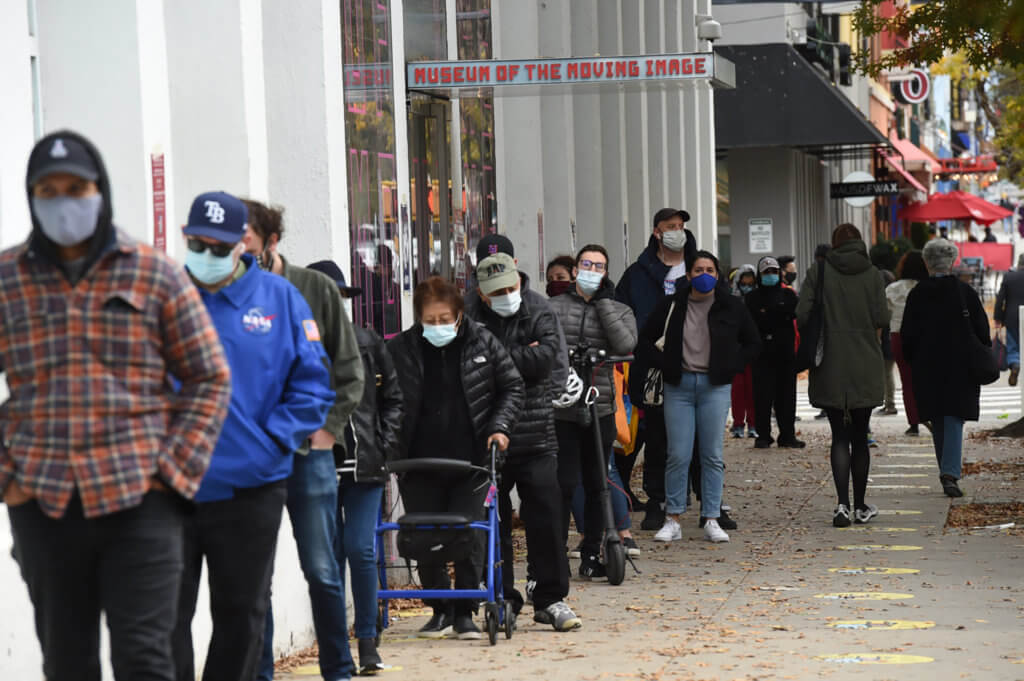
October
With one of the most divisive elections in history one month away, voters began looking away from 2020 and into what 2021 could bring with the start of early voting on October 24th. New protocols brought into place due to COVID-19, this year saw the highest voter turnout in history with thousands waiting in line for hours so that they could have their voices heard during a time when the majority were feeling forgotten.
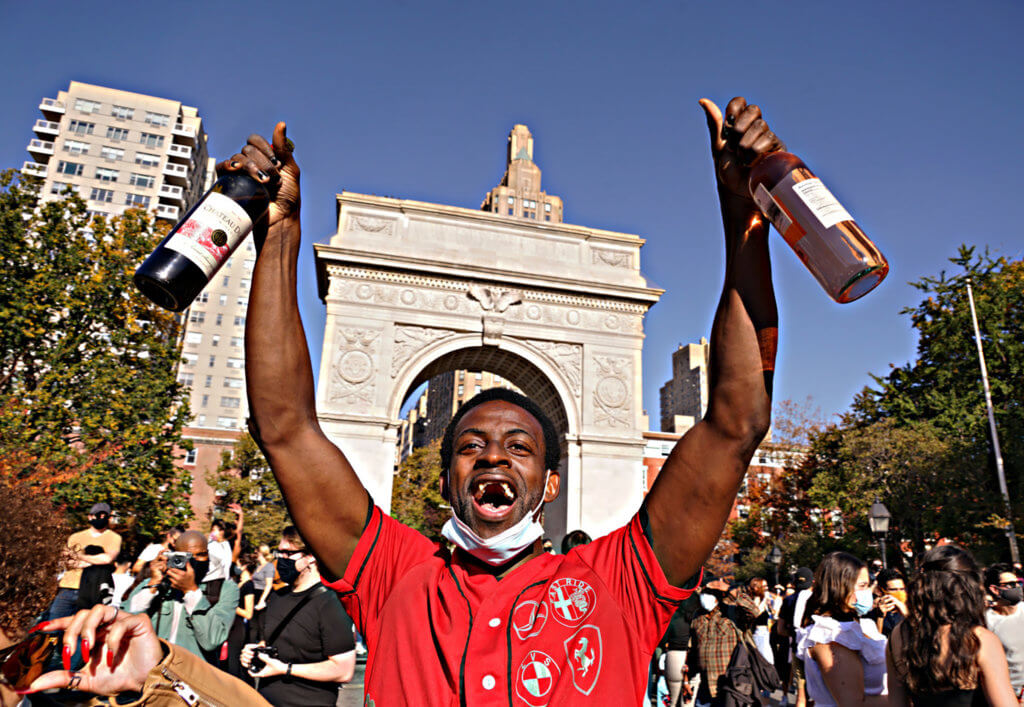
November
For the first time in the year New Yorkers had cause to celebrate. On November 7th it was officially announced that Joe Biden and Kamala Harris would be elected to the oval office. This declaration sparked a wave of euphoria that swiftly spread throughout the boroughs. Motorists let loose a cacophony of honks while the Star Spangled Banner was brought back to the streets as a symbol of hope in place of a symbol of protest. From Times Square where hundreds lined the streets to watch Biden’s acceptance to Washington Square Park where the young and old alike danced in the streaming fountain jets and popped champagne bottles whilst signing goodbye to the current president.
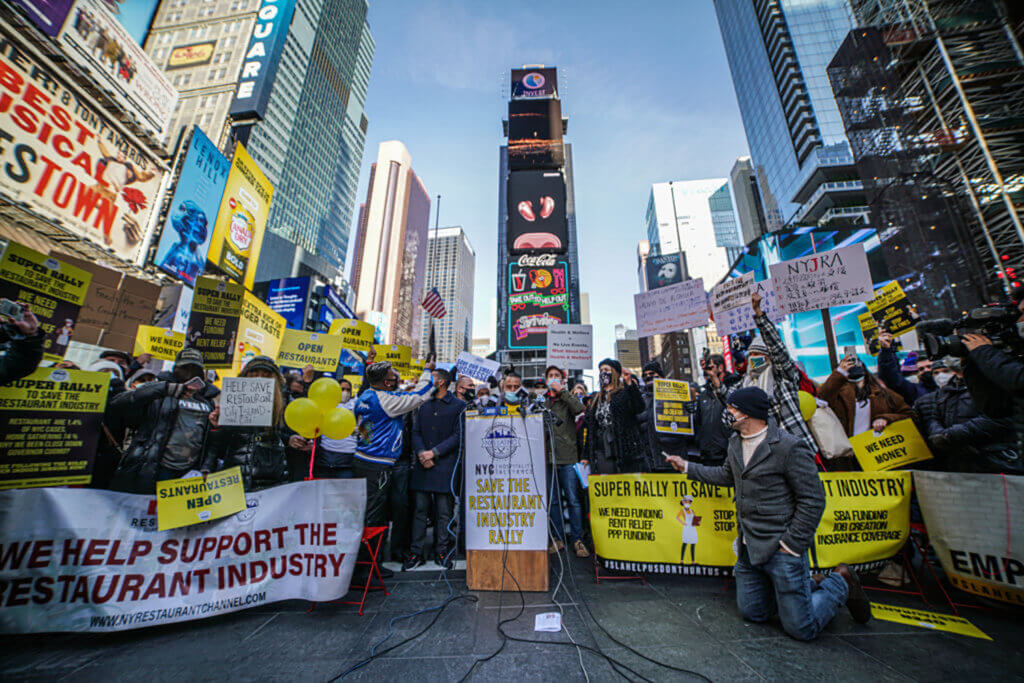
December
As the year drew to a close and the holiday season loomed, over a thousand frustrated restaurant workers descended on Times Square where they joined elected officials in calling for help. From the heart of the city to Governor Andrew Cuomo’s office, the essential workers stopped traffic as they pleaded for aid in order to continue serving food.



